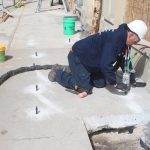**Fracture Strength Parameters:**
– Ultimate tensile strength
– Yield strength
– Proportional limit stress
– Offset strain (typically 0.2%)
– Fracture strength
**Types of Fracture:**
– Brittle fracture
– No plastic deformation before fracture
– Little energy absorption
– Continues even when loading stops
– Can occur by cleavage in crystalline materials
– Ductile fracture
– Extensive plastic deformation before fracture
– Rupture and ductile rupture in tension
– Crack propagates slowly due to energy absorption
**Characteristics and Testing for Fracture:**
– Ductile fracture involves slow crack movement with significant plastic deformation.
– Brittle fracture spreads rapidly with minimal plastic deformation.
– Testing techniques include fracture toughness ((K_c)), three-point flexural test, and compact tension test.
– Notch sharpening and fatigue crack induction are crucial for accurate crack length measurement.
**Materials and Fracture Behavior:**
– Ceramics have high strength and perform well at high temperatures.
– Ceramics exhibit low toughness compared to metals.
– Crack deflection around second phase particles can improve fracture toughness in ceramics.
– The Fiber Bundle Model aids in understanding composite material strength.
**Fracture Mechanics Applications and Studies:**
– Disasters caused by fracture in engineered structures.
– Boundary Integral Equation Method for solving stresses, strains, and displacements.
– Traditional and advanced methods in computational fracture mechanics.
– References and further reading materials for in-depth study.








Recent Comments